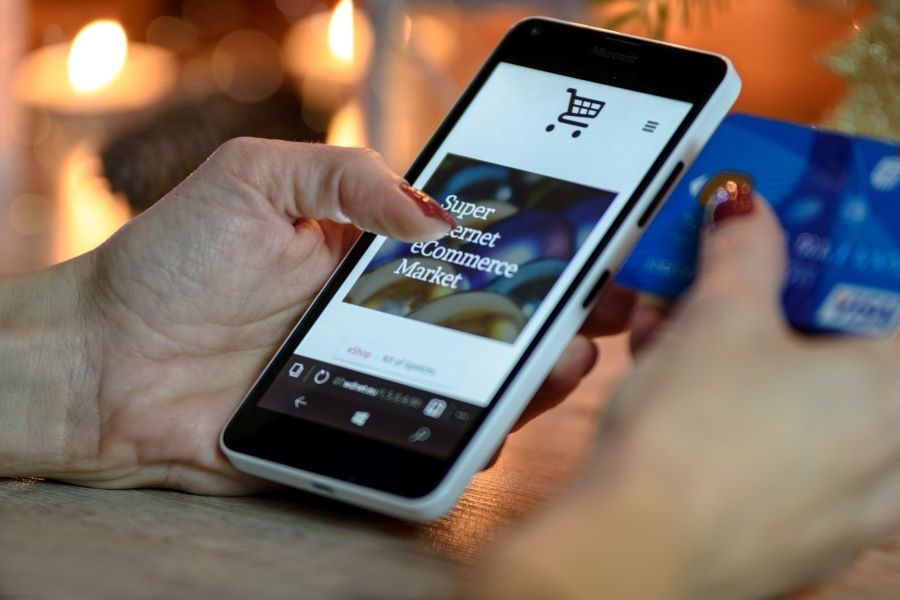03 Aug

There are several ways that you can market your products and services to your target audience online. Most companies delve into search engine marketing (SEM) to reach their prospective clients, while others focus more on social media and content marketing to address their audience’s needs.
Among the different marketing strategies you can use online, one of the most common is email marketing. This strategy is not only popular because it is effective, but also because it is relatively easy to set up and manage.
Email marketing refers to the practice of sending commercial messages to your target audience via email. There are two main approaches to this strategy, which are inbound and outbound. Inbound email marketing generally refers to messages that you send to your customers or prospects who have already expressed interest in your brand, while outbound email marketing involves messages sent from your company to target individuals who still have to learn about your company.
In this article, we will focus on inbound email marketing and its basics. Let’s take a look at what this strategy entails and how you can use it to achieve your marketing goals.
What is Inbound Email Marketing?
Inbound email marketing is a type of email marketing strategy that focuses on building relationships with your target audience through the provision of valuable and relevant content. Instead of bombarding your recipients with promotional messages, you provide them with helpful information that allows them to solve their problems. Some of the most common types of inbound emails are newsletters, content roundups, and discount or promo codes.
How is Inbound Email Marketing Different From Outbound?
The main difference between inbound and outbound email marketing is the focus of the message. In outbound email marketing, the message is focused on promoting your product or service, while in inbound email marketing, the message is focused on providing value to your target audience.
Outbound email messages are typically sent to a large number of recipients who have not expressed interest in your brand. The main goal of these messages is to promote your product or service and get recipients to take action, such as making a purchase or signing up for a free trial.
In contrast, inbound emails are sent to individuals who have already expressed interest in your brand. These messages are meant to nurture relationships with your audience and provide them with valuable information that helps them solve their problems.
These two email marketing strategies can be further differentiated based on three main aspects: audience and engagement, reach and speed, and marketing cost.

Audience and Engagement
Inbound and outbound email marketing strategies differ the most based on how they target audiences and engage with them. With inbound email marketing, you only approach and send marketing emails to individuals who have explicitly expressed interest in your brand by signing up to your mailing list or following your social media account.
You do this by nurturing prospective clients over a certain period. You can begin by attracting prospective clients and making them aware of your brand through blog posts, social media, and SEM. After a while, users may begin to become more interested in your company and opt-in to join your email list.
On the other hand, when you do outbound email marketing, you don’t need to have a list of recipients who have opted in to receive emails from your brand. Instead, you’ll be reaching out to individuals by acquiring an email list. Your main goal is to send emails to as many people as possible regardless of their interest in your company.
Reach and Speed
In terms of reach and speed, outbound email marketing generally has a wider reach because you’re not limited to only those who have opted into your email list. You can send emails to anyone with a valid email address, which gives you the potential to reach a larger audience.
However, inbound email marketing messages typically have a higher response rate because they are sent to individuals who have already shown an interest in your brand. Furthermore, since inbound email messages are usually triggered by an action that the recipient takes, such as subscribing to your newsletter or downloading a white paper, they are more likely to be interested in the content of your message.
Marketing Cost
The cost of implementing an inbound email marketing strategy is generally lower than that of an outbound email marketing strategy. This is because inbound email marketing relies heavily on content creation, which can be done relatively cheaply, and on organic methods of acquisition, such as social media and search engine optimization.
In contrast, outbound email marketing requires you to purchase an email list, which can be expensive. The more people you want to have on your email list, the more money you will have to shell out. To make your outbound email marketing strategy more effective, you might also have to use paid methods of promotion, such as cost-per-click advertising.
Benefits of Inbound Email Marketing
There are several benefits that you can enjoy by implementing an inbound email marketing strategy for your business. These include the following:
Increased Return on Investment
One of the main advantages of inbound email marketing is that it generally has a higher return on investment (ROI) than outbound strategies. This is because with inbound email marketing, you won’t have to spend too much money to reach an audience who has not subscribed to your mailing list.
The little amount you spend on inbound emails also allows customers to find your brand and learn more about it. This means that when a customer who has received an inbound marketing email from your company decides to visit your website, they are more qualified and may already have the intent to convert. In time, this will help improve your sales closing rate, which should be one of your top priorities.
Cost-Effective
Inbound email marketing is also a cost-effective way to generate leads and sales for your business. As we’ve mentioned, with inbound email marketing, you won’t have to spend money on acquiring a B2B email list as you would with outbound email marketing.
Furthermore, most of the methods that you’ll use to attract prospective customers, such as content marketing and SEO, are relatively inexpensive. And once you’ve implemented these methods and have built up a following, the results can be long-lasting and require little maintenance on your part.
Works for Any Kind of Company
Another great thing about inbound email marketing is that it can work for any kind of company, regardless of size or industry. Whether you’re a small business or a large corporation, an inbound email marketing strategy can be tailored to fit your specific needs and goals.
This is possible because even with a small budget, you can create relevant and helpful content for your target audience and lead them through the different stages of the buyer’s journey. You don’t need to spend too much of your resources to come up with award-winning content. Instead, you just have to know what your audience needs and address it at the right time.
Target Different Stages of the Buyer’s Journey
An inbound email marketing strategy can also help you target prospects who are at different stages of the buyer’s journey. For instance, if you want to target individuals who are in the awareness stage, you can create blog posts that address their specific needs and pain points.
On the other hand, if you want to target prospects who are already in the decision stage, you can create a case study or a white paper that showcases the results that your company has been able to achieve for its clients. By providing helpful and relevant content for each stage of the buyer’s journey, you can increase the chances of converting a prospect into a paying customer.
Provides Real Value to Customers
Finally, one of the most important advantages of inbound email marketing is that it helps you provide real value to your customers. With inbound email marketing, you’re not just sending out emails for the sake of it.
Instead, you’re sending emails that offer something of value to the recipient, such as helpful information, coupons, discounts, or freebies. This helps create a better relationship between you and your customers and encourages them to keep doing business with you.
Examples of Emails Used in Inbound Marketing
Now that we’ve discussed the definition of inbound email marketing and its advantages, let’s take a look at some examples of inbound emails. Here are some of the most common inbound emails sent by companies to their target audience:

Welcome Email
The first type of inbound email that we’ll discuss is the welcome email. As the name suggests, a welcome email is sent to new subscribers as soon as they sign up for your mailing list.
This email helps introduce the subscriber to your brand and what they can expect from being on your mailing list. It’s also a great opportunity to give new subscribers a discount or some other type of incentive for doing business with you.
Abandoned Cart Email
The next type of inbound mail you should know about is the abandoned cart email. This email is sent to customers who have added items to their shopping cart but have not completed the purchase.
Abandoned cart emails are a great way to recover lost sales and encourage customers to complete their purchases. They typically contain a list of the items that were left in the customer’s shopping cart as well as a link to the checkout page.
Curated Email
A curated email is a type of email that contains a selection of content that’s relevant to the recipient. This content can come from your own blog or website, or it can be sourced from other places on the internet.
Curated emails are a great way to keep your subscribers up to date on what’s going on in your industry. They’re also a good way to show your subscribers that you’re always on the lookout for helpful and relevant information.
Promotion Email
A promotion email is a type of inbound marketing email that is sent to subscribers when you’re running a sale or some other kind of special offer. These emails typically contain a link to the landing page for the promotion, as well as a brief description of what’s being offered.
Promotion emails are a great way to increase sales and drive traffic to your website or online store. They can also be used to promote new products or services.
This type of inbound email can be formatted in various ways. However, it should always include three key elements, which are a well-thought-out subject line, a brief description of the offer’s benefits, and an enticing call-to-action (CTA).
Back-in-Stock Email
A back-in-stock email is a type of inbound mail that’s sent to subscribers when an item they’re interested in becomes available again. This type of email often focuses on one product and creates a sense of urgency in the recipient.
Back-in-stock emails are also a great way to keep your customers up to date on your latest products and offerings. It’s a good way to encourage customers to make a purchase from you, especially if they’ve been waiting for a particular item to come back in stock.
Follow-Up Emails
Another type of inbound email is follow-up emails. It is a message that’s sent after a customer has made a purchase from you. These emails typically contain information on how to use the product, as well as any other relevant information.
This type of email is a great way to ensure that your customers are satisfied with their purchase and to encourage them to do business with you again in the future. They’re also a good way to upsell customers on other products or services that you offer.
Event Emails
The last type of inbound marketing email we’ll discuss is event emails. They are a type of inbound marketing email that’s sent to subscribers when you’re hosting an event. This type of email typically contains information on the date, time, and location of the event, as well as a link to purchase tickets.
Event emails are a great way to promote your company’s events and get people interested in attending. They can also be used to sell tickets or promote products or services that will be available at the event.
Take Advantage of Inbound Email Marketing for Your Business
As you can see, inbound email marketing is a powerful tool that can be used to achieve a variety of marketing goals. If you’re not already using this type of email marketing, we encourage you to start today.
Inbound email marketing is a great way to increase sales, drive traffic to your website or online store, and promote new products or services. It’s also an effective way to keep your customers up to date on your latest offerings, as well as encourage them to do business with you again in the future.
So, what are you waiting for? Start using inbound email marketing for your business today!